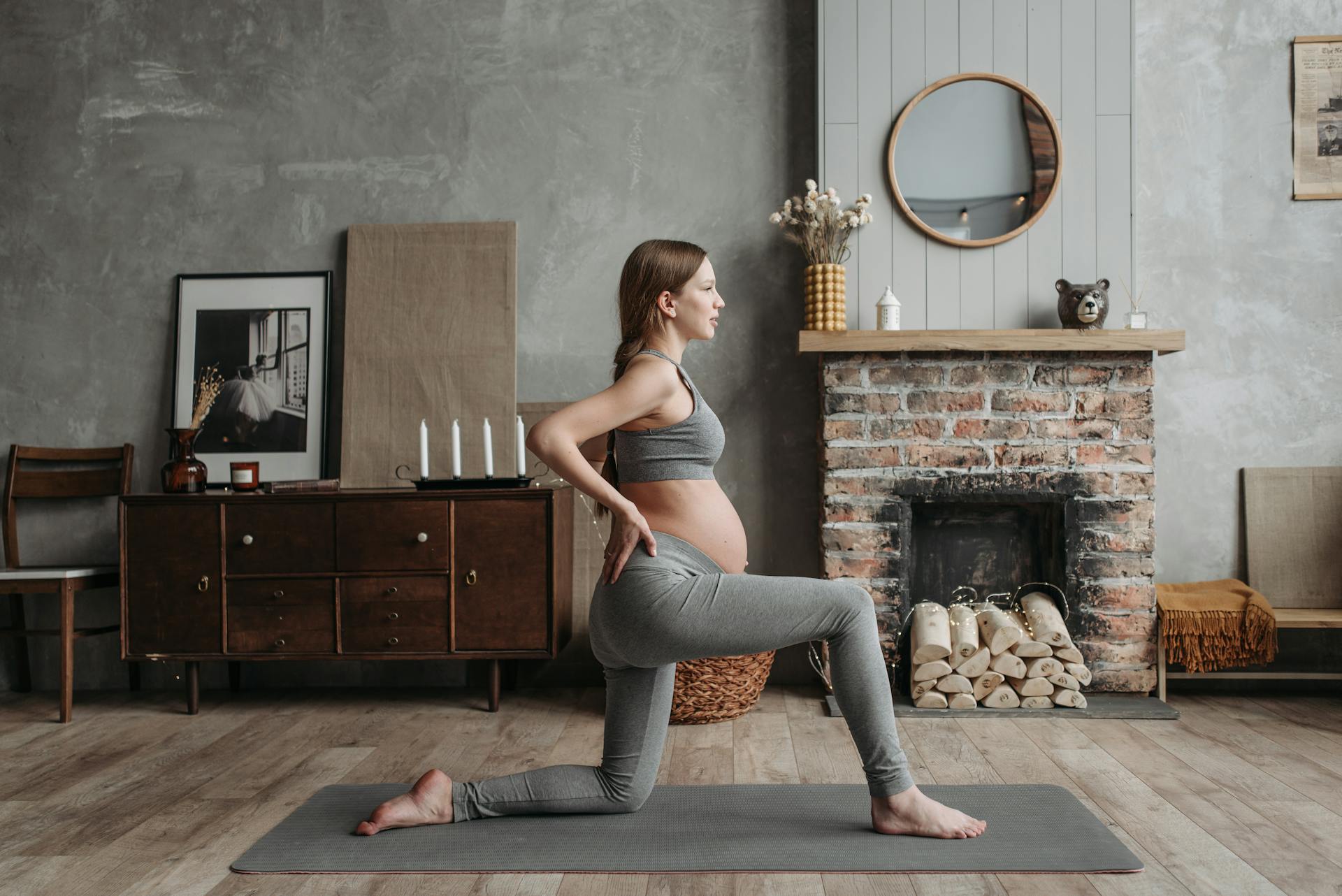Introduction
Being pregnant is a beautiful and transformative journey, but it can also come with its fair share of stress and anxiety. Taking care of your mental and physical well-being during pregnancy is crucial, and one effective way to achieve this is through gentle exercises. In this article, we will explore gentle stress relief exercise during pregnancy, the benefits of engaging in gentle exercises, and the necessary precautions to ensure safety.
Understanding the Importance of Stress Relief Exercise During Pregnancy
Pregnancy can bring about a range of emotions and stressors, from hormonal changes to concerns about the baby’s health. Managing stress is vital for both the expectant mother and the developing baby. Prolonged and excessive stress can lead to various complications such as preterm birth, low birth weight, and developmental issues. By prioritizing stress relief, pregnant women can create a harmonious environment for their unborn child.

Benefits of Gentle Exercises for Pregnant Women
Engaging in gentle exercises during pregnancy has numerous benefits that go beyond stress relief. These exercises promote overall physical well-being, enhance flexibility, improve posture, increase energy levels, and even reduce the risk of gestational diabetes. The combination of physical movement and relaxation techniques can have a positive impact on both the mother and the baby.
Precautions and Safety Measures
Before embarking on any exercise routine during pregnancy, it is essential to consult with your healthcare provider. They can assess your individual health condition and provide personalized recommendations. Additionally, pregnant women should listen to their bodies and avoid any exercises that cause discomfort or pain. It’s crucial to stay hydrated, wear appropriate clothing and footwear, and never overexert yourself.
I. Stretching: Enhancing Flexibility and Relaxation
A. Importance of Stretching during Pregnancy
Stretching exercises play a vital role in maintaining joint mobility, alleviating muscle tension, and improving posture. As the body undergoes changes to accommodate the growing baby, stretching can help relieve the strain on muscles and joints, promoting overall comfort and relaxation.

B. Safe and Effective Stretching Exercises
- Neck and Shoulder Stretches: Gently roll your neck in circular motions, and slowly tilt your head from side to side. For your shoulders, try reaching your arms across your chest and holding the stretch for a few seconds on each side.
- Leg Stretches: Sit on the edge of a chair and extend one leg in front of you, flexing your foot. Slowly lean forward, aiming to touch your toes without straining. Repeat with the other leg.
- Upper and Lower Back Stretches: Stand with your feet hip-width apart and place your hands on your lower back. Gently lean backward, arching your back slightly. Hold the stretch for a few seconds, then return to the starting position. For the upper back, interlace your fingers in front of you and stretch your arms forward, rounding your upper back.
II. Prenatal Yoga: Cultivating Mindfulness and Serenity
A. Understanding Prenatal Yoga Benefits
Prenatal yoga is a wonderful practice that combines gentle physical movements with mindfulness and breathing techniques. It promotes physical well-being, reduces anxiety and mood swings, and prepares the body and mind for labor and delivery.
B. Recommended Prenatal Yoga Poses and Techniques
- Cat-Cow Pose: Get onto all fours, with your hands under your shoulders and your knees under your hips. Inhale deeply, arching your back and lifting your gaze (cow pose), then exhale and round your back, tucking your chin toward your chest (cat pose). Repeat this fluid movement for a few minutes, focusing on your breath.
- Supported Squat Pose: Stand with your legs wider than hip-width apart and turn your toes slightly outward. Slowly lower yourself into a squat position, coming onto your tiptoes if needed. Hold onto a wall or chair for support if necessary. Stay in this position for a few breaths, then rise back up slowly.
- Modified Child’s Pose: Come onto all fours and then sit back on your heels, keeping your knees wide apart. Extend your arms forward and place your forehead on the mat or a cushion. Breathe deeply and sink into this gentle stretch, allowing your body to relax.
III. Swimming: Submerging into Tranquility and Exercise
A. Advantages of Swimming during Pregnancy
Swimming is a fantastic exercise option for pregnant women as it provides a full-body workout with reduced impact. The buoyancy of water relieves swelling and muscle aches, while the rhythmic movements enhance circulation and cardiovascular health.

B. Safe Swimming Practices for Expectant Mothers
- Choosing Suitable Stroke Styles: Opt for strokes such as freestyle or breaststroke, which are gentle on the joints and provide effective cardiovascular exercise. Avoid strokes that require sudden twisting or excessive strain on the abdominal area.
- Modifying Techniques as the Pregnancy Progresses: As your pregnancy advances, adjust your swimming techniques to accommodate your growing belly. Maintain a steady and comfortable pace, avoiding strenuous movements.
- Pool Hygiene and Safety Guidelines: It’s essential to choose clean and well-maintained pools. Ensure that the pool water is properly chlorinated and that safety measures, such as lifeguards and flotation devices, are in place. Additionally, practice good hygiene by showering before and after swimming.
IV. Walking: Connecting with Nature and Inner Calm
A. Walking Benefits for Pregnant Women
Walking is a simple yet highly beneficial exercise for pregnant women. It boosts energy levels, improves sleep quality, reduces the risk of gestational diabetes, and provides an opportunity to connect with nature and find inner calm.

B. Creating a Beneficial Walking Routine
- Appropriate Footwear and Clothing: Wear comfortable and supportive shoes that provide proper cushioning. Opt for breathable and moisture-wicking clothing that allows flexibility of movement.
- Setting Realistic Goals for Distance and Intensity: Start with shorter walks and gradually increase the distance as your stamina improves. Focus on maintaining a gentle and steady pace that allows you to carry on a conversation without feeling breathless.
- Safety Considerations for Outdoor Walking: Choose safe walking paths, preferably away from heavy traffic. Stay hydrated, apply sunscreen, and consider walking during daylight hours. In colder climates, dress in layers to protect against harsh weather conditions.
V. Pelvic Floor Exercises: Strengthening Stability and Control
A. Understanding the Importance of Pelvic Floor Health
Maintaining a healthy pelvic floor is essential for preventing urinary incontinence and prolapse, preparing for labor and postnatal recovery, and enhancing sexual well-being. Pelvic floor exercises, also known as Kegels, can help strengthen these muscles.

B. Effective Pelvic Floor Exercises for Pregnant Women
- Kegels: Sit or lie down comfortably and squeeze the muscles of your pelvic floor as if you are trying to stop the flow of urine. Hold for a few seconds and release. Repeat this exercise multiple times throughout the day.
- Squats and Lunges: These exercises engage the entire lower body, including the pelvic floor muscles. Perform squats by standing with your feet shoulder-width apart and lowering yourself into a sitting position. For lunges, take a step forward with one foot, bending both knees while keeping your back straight.
- Pelvic Tilts: Lie on your back with bent knees and feet flat on the floor. Gently tilt your pelvis upward, pressing your lower back into the mat. Hold for a few seconds, then release. This exercise helps strengthen the lower back and pelvic floor muscles.
VI. Conclusion
Gentle exercises provide vital stress relief during pregnancy and offer a myriad of benefits for both the expectant mother and the developing baby. By incorporating stretching, prenatal yoga, swimming, walking, and pelvic floor exercises into your routine, you can enhance your physical and mental well-being throughout this transformative journey. Remember to prioritize stress relief and consult with your healthcare provider for personalized advice on exercising during pregnancy.
FAQs(Frequently Asked Questions)
- What exercises should I avoid during pregnancy?
During pregnancy, it’s important to avoid high-impact exercises, activities that involve lying flat on your back, contact sports, and any exercises that put excessive strain on your abdominal or pelvic area. Always consult with your healthcare provider for a comprehensive list of exercises to avoid.
- Can I start a new exercise routine during pregnancy?
If you have been inactive before getting pregnant, it’s recommended to start with gentle exercises and gradually increase the intensity. Always consult with your healthcare provider before starting a new exercise routine during pregnancy.
- When should I consult with my healthcare provider before exercising during pregnancy?
It’s essential to consult with your healthcare provider if you have a high-risk pregnancy, certain medical conditions, or if you experience any complications during your pregnancy. They can provide guidance tailored to your specific situation and ensure your safety and well-being during exercise.




